- Home
- Lisa Smedman
Blood Sport Page 15
Blood Sport Read online
Page 15
“But why machetes?” I asked.
“Government soldiers are protected by spells that provide a barrier to bullets,” the shaman said. “Some are even magically protected against blast and fire. They could literally walk across a minefield and not be harmed.”
The driver grinned. “But the government didn’t think to protect them against the lowly machete.”
The shaman’s elbow nudged my pocket. “If that pistol is government-issue, I’d suggest you get rid of it,” he said. “If the soldiers find it on your person . . .”
I could imagine the rest. But old habits die hard. I was used to carrying a gun—even though I knew it was little more than a psychological crutch in a situation like this.
“Thanks for the warning, but I’ll keep it for now,” I told him. “There may be more trouble ahead.”
I was right, of course. But it was trouble that a gun wouldn’t solve.
13
The blindfold over my eyes was soaked with sweat. It was hot in the cab of the pickup. I was squeezed in between the eagle shaman and the rebel who was driving. The road we were traveling must have been unpaved and full of potholes. Either that or the pickup truck didn’t have any shocks left. We bounced and jostled our way along, and I kept one hand on the dash to prevent myself from being flung forward into the windshield.
During the trip, the rebels kept the truck’s radio tuned to a live broadcast of the ollamaliztli game—the third game of the national finals. They had it cranked up loud so those in the back of the truck could listen, and I could hear Rafael’s deep-voiced cheers or groans each time a goal was scored.
Despite my normal antipathy toward sport, I was caught up in the game—having a blindfold over my eyes and not being able to see anything probably helped. I spent most of my time trying to imagine what the game looked like. It sounded something like basketball—the object seemed to be to get a ball through a ring. But the ball could bounce off walls and still be in play, and the game also made use of “end zones.” I just couldn’t picture it.
The Jaguars were ahead for most of the game. They scored six points to the Serpents’ two, and victory looked certain, since seven points was game. Two Jaguars and three Serpents had been knocked out of play—this was a brutal sport in which lethal weapons could be used to take out an opponent—and the Serpents’ captain had a broken arm. The announcers described his injury in gory detail, and speculated whether illegal combat drugs were the only thing keeping him going. But then the Serpents came from behind, scoring five goals in a row to win the game.
The driver beside me cheered and shut off the radio, and I heard the rebels in the back avidly discussing whether magic had illegally been used. The Jaguars were rumored to be shamans of that totem animal, while the Serpents were said to be pumping Kamikaze, an illegal combat drug, and masking it after the game with an inhibitor. The female rebel thought magic was fair game—naturally enough, since she was a mage of some sort. Her beef was that only human males were allowed to play at the national level. Why, her sister was every bit as good at ollamaliztli as any man and yet she . . .
At last the truck ground to a halt. We were inside something cool—a building, perhaps. And dark, I saw when my blindfold was removed.
The pickup truck had pulled into a room just large enough to accommodate it. Stone walls surrounded us and the entrance was a rough hole in one wall with rubble piled to either side. It looked as though an original doorway had been widened so that the truck could pass through it. Sunlight streamed through the opening and swallows swooped in and out. Other than a jet engine, high overhead, the air was still. We must have been way out in the country, far from any town or road.
The rebels had insisted that Rafael and I wear bandannas tied over our eyes while they drove to their base. As we climbed out of the pickup truck and followed them out of the stone “garage,” I saw that we had come to an ancient, ruined city. All around us were stone-walled buildings, multi-leveled edifices that looked like a series of wide, flat blocks, placed one on top of the other with the smallest on top. Regularly spaced, rectangular doorways led into darkened interiors. Wide stone staircases at the center of each level led to the story above.
Most of the buildings’ upper stories had collapsed into heaps of rubble and had grasses or trees growing from them. But the architecture was still impressive. Plain, fitted-stone walls were accented with stone that had been carved to form a lattice pattern or with panels that were covered with blocky hieroglyphs or stylized images of ancient rulers and gods. The stones were all a dusky orange-gray, but I could see flecks of paint, here and there, that told me that this must once have been a colorful place.
I was struck with the weight of history that permeated this land. I was used to living in a modern city—Seattle was founded in 1852, but any vestiges of its comparatively short history had long ago been paved over, obliterated by highways, or buried under arcologies. In contrast, this region of the Yucatán was ancient, the bones of its centuries-old cities still visible. As we passed by a ruined building, I trailed my fingers across the pitted surface of its stonework, feeling the outlines of hieroglyphics that had been carved by ancient hands. For the first time, I had an inkling of what had driven Rafael to explore his Azzie heritage. This country had deep roots.
And then I remembered the human sacrifices performed by the ancient Azzies and pulled my hand away from the stone. Those roots were watered with blood.
We wound our way along a trail that traversed the site, at one point passing through a huge, freestanding stone arch. After about fifteen minutes we came to a more or less intact building whose lower stories were devoid of doors. We climbed the wide staircase that led to its uppermost story, which was about fifteen meters above ground level. The building was square, rather than rectangular, and looked a bit like a temple.
The stone steps were weather-worn, narrow and steep. I could only fit the ball of my foot on them, giving me the feeling that I was balancing precariously in space. I leaned forward, one hand touching the steps above to keep my balance. The stairs were so steep that climbing them was more like trying to scale a steep hillside. You didn’t stand up straight to do that; lean back a little and you’d topple backward and fall. I noticed that Rafael was doing the same—and concentrating intently on the stonework right in front of him. He was such a daredevil on his motorcycle that it had never occurred to me that he might be afraid of heights. The rebels chuckled to themselves and moved as if they were climbing a normal flight of stairs. But I noticed that they were sweating as much as Rafael and I were. Even for someone used to this heat, the climb was a real workout.
By the time we reached the uppermost story, I was gulping air. I paused and turned around. The stairs were so steep I couldn’t even see them unless I stood right on the edge. It felt as though the balcony we stood on was floating in space.
The building was a good choice for a rebel base—the balcony-like platform that surrounded the upper level provided a clear view over the flat scrub land below. I could see for several kilometers, all the way to a collection of pastel-colored buildings that must have been the nearest town.
We had climbed to the central doorway on the fourth story. On either side of this rectangular opening was a pillar carved in the shape of a snake, with its tail in the air and gaping serpent head at the bottom. The stonework was chipped and broken, but I could make out the manes of feathers that surrounded their faces. Had the people who built this site once met with feathered serpents—perhaps even with Soñador itself—centuries ago?
The shaman, who had introduced himself simply as Águila—Eagle—led us inside the building. The interior consisted of a number of long, narrow rooms, all empty and with floors covered with wind-blown dust and bits of broken stone. At first I wondered why we had come here, but then Águila pulled a magkey out of his pocket and slotted it into what looked like an ordinary crack in the stonework. I heard the hum of an electric motor and stepped back warily as a portion of
the floor slid open, revealing a flight of stone steps. Dust trickled into the opening.
The three rebels we had met at the checkpoint disappeared down the steps. After a moment, Águila motioned for us to follow them. Rafael and I exchanged glances, then shrugged. There was no turning back now.
I descended the steps carefully, following them as they turned a sharp corner. The walls were rough stone and the ceiling overhead was shaped like an inverted V, narrow at the top and sloping out to meet the walls. There wasn’t much head room—Rafael had to walk with his shoulders hunched to avoid banging his head. The air smelled of dust—and strangely, of plastic—and the temperature dropped steadily as we descended. After the heat of our climb up the steps outside, it was downright chilly. I shivered and zipped up my jacket. Above us, I heard the trap door slide back into place and Águila’s footsteps behind Rafael. Even with my cyberear’s amplification system I couldn’t hear much more than a murmur of voices below as the rebels, who had descended more quickly than us, exchanged greetings with someone. The sound was muffled, as if by a closed door.
Despite its ancient appearance, the stairway was illuminated with lights that had been bolted into the walls. They must have had battery packs; I didn’t see any electrical wires. As we rounded a second bend I saw a large niche on my right and paused to peer into it. Inside it was a huge stone sarcophagus, its sides crammed with hieroglyphs and its top depicting the image of a feather-caped noble in a tall, ornate headdress. The lid of the sarcophagus was cracked, and didn’t sit properly on its base. I wondered how they’d gotten the thing down the narrow staircase. Maybe they’d constructed the building around it.
The lights from the stairway threw a shadow across the sarcophagus as Rafael crowded in behind me and peered over my shoulder. Águila paused on the steps above.
“It’s empty,” the shaman said, answering the question I’d been about to ask. “It was carved to hold the body of King Topiltzin—a Toltec ruler of the tenth century. He was famous for refusing to perform human sacrifices—instead he sacrificed animals or butterflies to the gods. So pious was he that people began calling him after the god he held above all others: Quetzalcóatl, the feathered serpent. Or Kukulcán, in the Mayan language.”
I wondered why the shaman was giving us the history lesson. But I didn’t interrupt.
“Although this sarcophagus was carved for Topiltzin, he was never placed in it,” Águila continued. “According to legend he sailed away to the east on a raft of serpents, promising to return in the year Ce Acatl—One Reed in the ancient Aztec calendar. Some say he did return, in 2039, to lead the riots in Celestun. Others claim that he will not return until 2091, the next One Reed year.”
I was reminded of something I’d scanned in the guide to Aztlan I’d slotted earlier. I hadn’t bothered uploading the information to my headware, and had to rely upon old-fashioned wetware memory to dredge up the information.
“Didn’t the legend of Queztalcóatl's return correspond with the arrival of Cortés in 1519?” I asked. “Isn’t that why the king of the Aztecs welcomed the Spanish conquistadors into Tenochtitlán—only to find out they weren’t gods when they attacked and looted his city?”
“I remember that, too,” Rafael rumbled. “Quetzalcóatl was supposed to be a white guy, with a beard. Montezuma was afraid to attack him, and lost his capital city as a result.”
Águila nodded. “That is correct. Tenochtitlán will fall once more, when Topiltzin returns to conquer it. And Aztechnology’s reign of blood will at last come to an end.” The fervor in the revolutionary’s eyes made me pause. It reminded me of the eager gleam I’d seen in the eyes of the missionaries—the ones who had used their memory-probing magic on Mama G. Prophetic reckonings seemed to run deep in the culture of Aztlan. The only difference was that this time, the prophecy called for the Azzie government to be destroyed—not the entire Earth.
“Pardon me,” Águila said as he used the extra space provided by the cryptlike niche to squeeze past Rafael and I. We followed him down the remainder of the stairs to a heavy metal door. He slotted the magkey once more and I heard a lock click open. Pushing the door wide, Águila walked through it and held it open as we followed.
As I passed through the doorway, something glitched in my cyberear. Suddenly all I could hear was static. I quickly turned down the volume to almost nil and listened with my meat ear instead. I wondered if the rebels had some sort of jamming device that was scrambling radio signals—I suspected that the now-defunct police radio in my cyberear was somehow affected by it.
The space beyond the door was reminiscent of a military bunker. The walls were of stone, rather than ferrocrete, but the overall feel was the same. Olive green metal shelving along the walls held foodstuffs, medical supplies, and weapons—including a number of sophisticated-looking arrays of tubes that I guessed were anti-tank or anti-armor missile launchers. Military style cots filled alcoves to either side of the main room, and rebels—dressed like campesino farmers but moving with the purpose of trained soldiers—bustled back and forth. I heard the hiss of a ventilation unit and guessed that filtered air was being pumped in from somewhere outside.
After the rebels’ machete attack at the checkpoint, I’d been thinking of their revolution as a low-tech peasant uprising. I now saw that they had some sophistication and technological know-how, after all.
We followed Águila through two more rooms and into a third. Half a dozen rebels whom we had not yet met stared at us as we went by, interrupting their avid post-game analysis of the ollamaliztli game to mutter behind their hands about us. I was starting to get nervous. I thought we’d proven ourselves to be friendly, back at the checkpoint. But it was clear that, should they change their minds again and decide that we were spies after all, we would not walk out of this bunker alive.
We entered a room that was filled with electronic gear. A troll dressed in camouflage pants and shirt and black military boots whose spit-shine was overlaid with a fine layer of orange dust sat with unfocused eyes, mind-deep in the Matrix as she worked the cyberdeck balanced in her lap. Twin cords ran from the deck to datajacks in either temple, at the base of her horns. The horns themselves rose from her head in tight spirals and were ornately carved with what I guessed were Mayan or Aztec hieroglyphs.
I wondered how the rebels were able to access the Matrix from this distant location. My guess was that there must have been some sort of satellite uplink concealed in the ruins above.
Behind the troll stood a tall, thin human. His skin seemed unnaturally white in the artificial lighting of the bunker and was shaded with blue where a tracery of veins lay close to the surface. With his frizzy, bright red hair and full beard, he looked more like a northern Euro than a mestizo. His pants were white and crisp enough to have been bleached and starched, and his shirt bore a richly colored, embroidered design in a complicated geometric pattern reminiscent of feathers or leaves. His fingernails were long and neatly tapered, as if they had been manicured. A neat freak, I decided. And clearly the leader of this rebel group, judging by his air of authority and command. He seemed unsurprised to see us—almost as if he had been expecting us. I could only guess that one of the rebels from the checkpoint had told him we were on our way here. Strangely, he seemed familiar to me—although I would swear a court oath that we had never met before.
“Hola. Welcome to my hacienda he said, smiling at his own joke. The bunker was Spartan and strictly functional—anything but a lavish estate.
Rafael and I nodded our hellos.
Águila doffed his cowboy hat and held it in his hands, turning it nervously. “Is there anything else, Kukulcán?”
“Not at the moment,” The redhead answered. “Close the door on your way out, Águila.”
The shaman looked disappointed at this dismissal, but did as he was told. Now we were alone with the rebel leader. Alone, that is, except for the troll, but she was too deep in the Matrix to acknowledge us.
Rafael broke the silence. “Kuku
lcán, huh? Is that a code name or do you really think that you’re the reincarnation of the Toltec king Topiltzin?”
Kukulcán smiled. “Would you believe me if I told you that my surname was actually Cortés?”
I shrugged. “Anything’s possible.”
Kukulcán wet his lips with the tip of his tongue. And in that moment, I realized why I’d thought he looked familiar. The gesture was similar to the one Mama G had used—to a snake’s tongue flicking out and into its mouth again. But there was still something else about him . . .
“I am told you are looking for information on a kinswoman of yours—your Mama Grande. You are obviously quite determined to succeed in this quest, to have made it this far into Aztlan.”
“We’re motivated,” Rafael answered dryly. “The man who murdered my—”
I dug an elbow into Rafael’s muscle-solid stomach. “Did you know Rosalita Ramirez?” I asked.
Kukulcán nodded. “Quite well. Many of my fighters were healed by her.”
“We’re traveling to Izamal to learn more about her,” I told Kukulcán.
“I know,” he interrupted. “You wish to speak to the sacerdote who helped Rosalita.”
Rafael gaped. “How did you know . . .”
Suddenly I knew why Kukulcán seemed so familiar. “We’ve met before, haven’t we?” I asked him. “In a cave near Monterey. But you weren’t in human form then.”
Rafael turned to look at me. “You mean this is . . .”
The troll using the cyberdeck shifted slightly in her seat. Kukulcán waved a hand for silence. The gesture was sinuous and flowing, like the movement of a serpent.
“The man you are looking for is Father Gustavo Silvio,” he said. “To meet with him, go to the church in Izamal. Light a candle in the alcove of the Virgin and then wait in the confessional. He will contact you.”
Kukulcán looked at us appreciatively. “I did not think you would make it this far,” he added. “Two foreigners, alone in Aztlan ... You have proven yourselves both resourceful and capable of surviving here.”

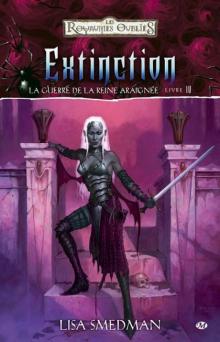 Extinction
Extinction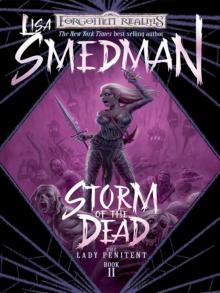 Storm of the Dead
Storm of the Dead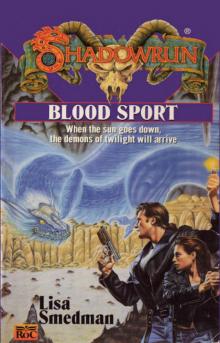 Blood Sport
Blood Sport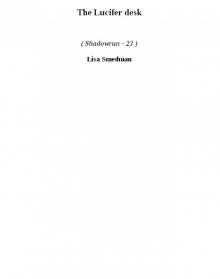 The Lucifer desk (s-2)
The Lucifer desk (s-2) Vanity's Brood
Vanity's Brood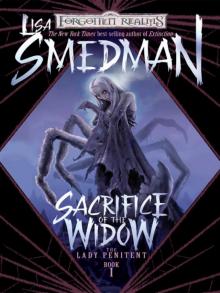 Sacrifice of the Widow
Sacrifice of the Widow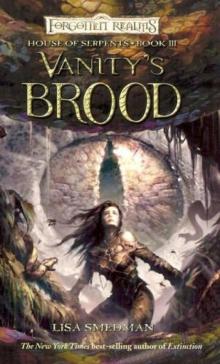 Vanity's brood hos-3
Vanity's brood hos-3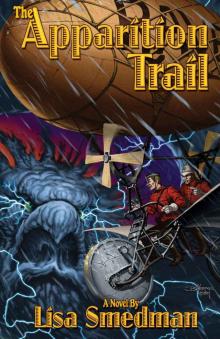 Apparition Trail, The
Apparition Trail, The Venom's Taste
Venom's Taste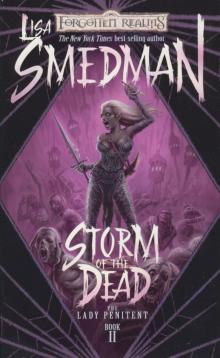 Forgotten Realms - The Lady Penitent - Storm of the Dead
Forgotten Realms - The Lady Penitent - Storm of the Dead Viper's kiss hos-2
Viper's kiss hos-2 Tails You Lose
Tails You Lose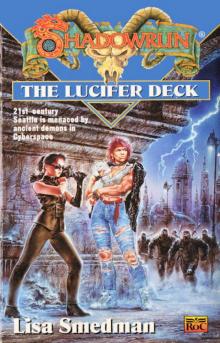 The Lucifer Deck
The Lucifer Deck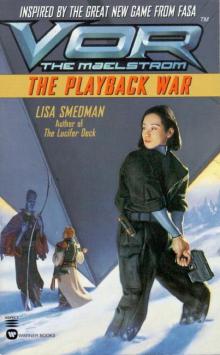 Vor: The Playback War
Vor: The Playback War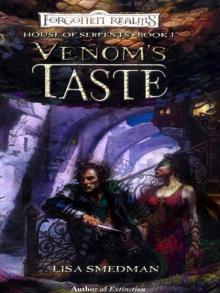 Forgotten Realms - House of Serpents 1 - Venom's Taste
Forgotten Realms - House of Serpents 1 - Venom's Taste Storm of the Dead зкp-2
Storm of the Dead зкp-2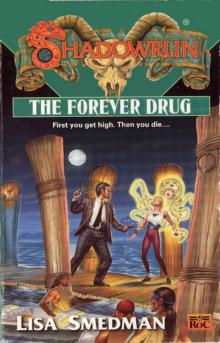 The Forever Drug
The Forever Drug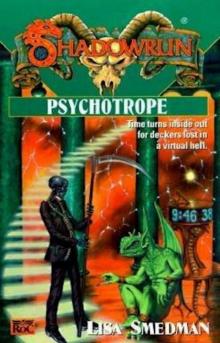 Psychotrope
Psychotrope Realms of Shadow a-8
Realms of Shadow a-8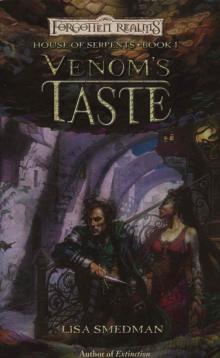 Venom’s Taste hos-1
Venom’s Taste hos-1 Psychotrope s-33
Psychotrope s-33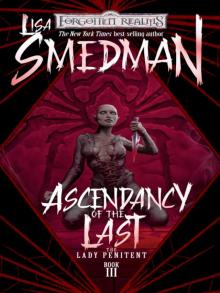 Ascendency of the Last
Ascendency of the Last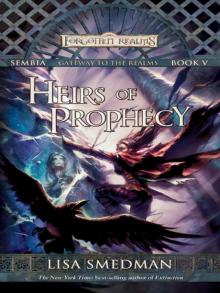 Heirs of Prophecy
Heirs of Prophecy Ascendancy of the Last зкp-3
Ascendancy of the Last зкp-3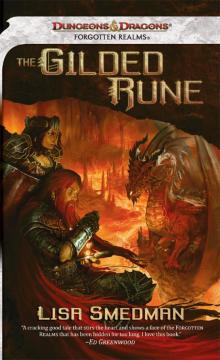 The Gilded Rune (forgotten realms)
The Gilded Rune (forgotten realms)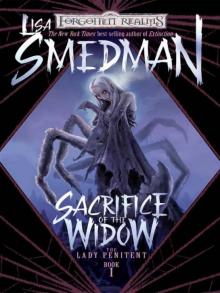 Sacrifice of the Widow: Lady Penitent, Book I
Sacrifice of the Widow: Lady Penitent, Book I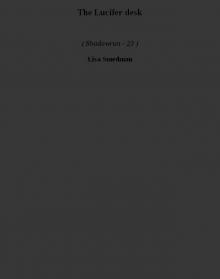 The Lucifer desk s-23
The Lucifer desk s-23 Sacrifice of the Widow lp-1
Sacrifice of the Widow lp-1 Viper's Kiss
Viper's Kiss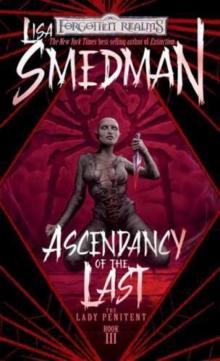 Forgotten Realms - The Lady Penitent - Ascendancy of the Last
Forgotten Realms - The Lady Penitent - Ascendancy of the Last